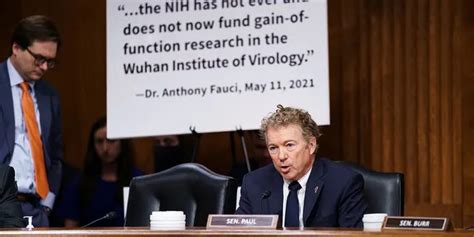There have been several heated discussions about whether NIH supports research that results in more deadly infections. This research has been described as “gain of function” experiments, but this term has created uncertainty and confusion. In part this is because “gain of function” research has a more limited definition than the concepts being discussed in Congress and the press.
Classic “gain of function” research involves making an infectious agent easier to transmit or more likely to cause illness and death. It is almost always conducted with a goal of causing or understanding a human infection or creating and enhancing an infection that can be given to humans.

Examples include making a more easily transmissible virus. For example, a virus that is normally transmitted only by blood is altered so it can be transmitted by respiratory means or coughing. Another example would be taking bacteria that normally do not kill with infection and making them deadly. This could involve adding toxins to the bacteria. Another example would be to purposely make bacteria resistant to antibiotics so they could not be treated once a person became infected. There are many experiments like these throughout the scientific literature!
A central tenant of “gain of function” research is the expressed intent to make the bacterial infectious agents more deadly to people. On occasion, this outcome is seen as an unexpected result of research examining viruses or bacteria. However, if the intent is not present, it is not considered “gain of function.” Of course, humankind still must deal with the implication of an improved organism introduced to the world.
There is often a fine line between important studies to investigate the mechanisms by which viruses and bacteria cause infections and potential “gain of function” research. It would be important to better understand how viruses infect people in order to develop vaccines and drugs to treat these infections. In a broader sense, it would also be important to know how infectious agents are transmitted to understand whether masks or other protective gear prevent infections. This type of research is crucial to preventing or treating infections, however it could also give insights into how to make infections worse.
This takes us back to the debate currently raging in Congress and the media. On one side, numerous politicians have accused NIH, its Director Francis Collins and NIAID Director Tony Fauci of funding “gain of function” research conducted at the virus infectious disease facility in Wuhan China. Doctors Collins and Fauci both vigorously deny that this was “gain of function” research. Unfortunately, the truth may lie somewhere in between these two positions.

Initial studies funded by NIH in Wuhan were meant to better understand coronaviruses and how they infect people. The goal was to develop better antiviral drugs and to better understand whether or not there could be another human infection like SARS which occurred 20 years ago. None of the work initially funded or envisioned by NIH had the intent of creating more infectious viruses to purposely harm people. Independent scientific review had been undertaken to assure that no part of the research purposely resulted in more infectious viruses. From that standpoint, NIH is correct in that it did not purposely fund “gain of function” research.
What now is clear is that this research resulted unexpectedly in the discovery of new animal viruses that could potentially infect humans and cause disease. This outcome should have been immediately reported to NIH for review by its bio safety and ethics groups, but reportedly that did not occur. There is some debate about this because the researchers claim they did report this outcome. Whatever the case, there was clearly work that resulted in new viruses that can infect humans.
Despite this, none of these viruses that were studied look anything like COVID-19/SARS-CoV-2. Therefore, it is unlikely that this work had any role in the pandemic. Again, intent to create a worse virus is very important in defining “gain of function” and was not suspected here.
If that’s where the story had ended, NIH and the group it funded at Wuhan would be totally vindicated. Unfortunately, that isn’t the end.
There is now information that suggests similar research proposed at Wuhan by their U.S. collaborator EcoHealth Alliance was potentially expected to result in more infectious viruses that could be evaluated for how they were causing illness. This has come out from reviews done on proposals from 2018, not for NIH, but for the Department of Defense. These proposals were quickly identified as inappropriate and not supported or funded. However, this suggests that there was intent for these investigators to produce an enhanced infectious agent.

The investigators denied the experiments could be conceived as “gain of function,” but at best this seems to reflect either naivety or a lack of insight into the potential of the work. The world scientific community seems united in viewing EcoHealth’s actions a serious concern. Reflecting this, a task-force from the Journal Lancet assembled to investigate the origins of Covid in Wuhan was disbanded when a member, Peter Daszak head of the EcoHealth Alliance, was identified as responsible for the 2018 DOD proposal to collaborate with Wuhan on more deadly bat coronaviruses.
This problem may only get worse. New technology now enables talented high school students to create toxic bacteria in a garage or basement lab. Virus research, which has exploded during the pandemic, is necessary to better inform treatments and public health efforts, but can lead to worse infections. Regardless, keeping this new information safe from individuals who would want to do harm will be a challenge.
another excellent, informative, balanced post, thank you. Or, as Al Capp’s Pogo said: “We have met the enemy, and it is us” (US EcoHealth Alliance) and Peter Daszak
LikeLike
yes!
LikeLike